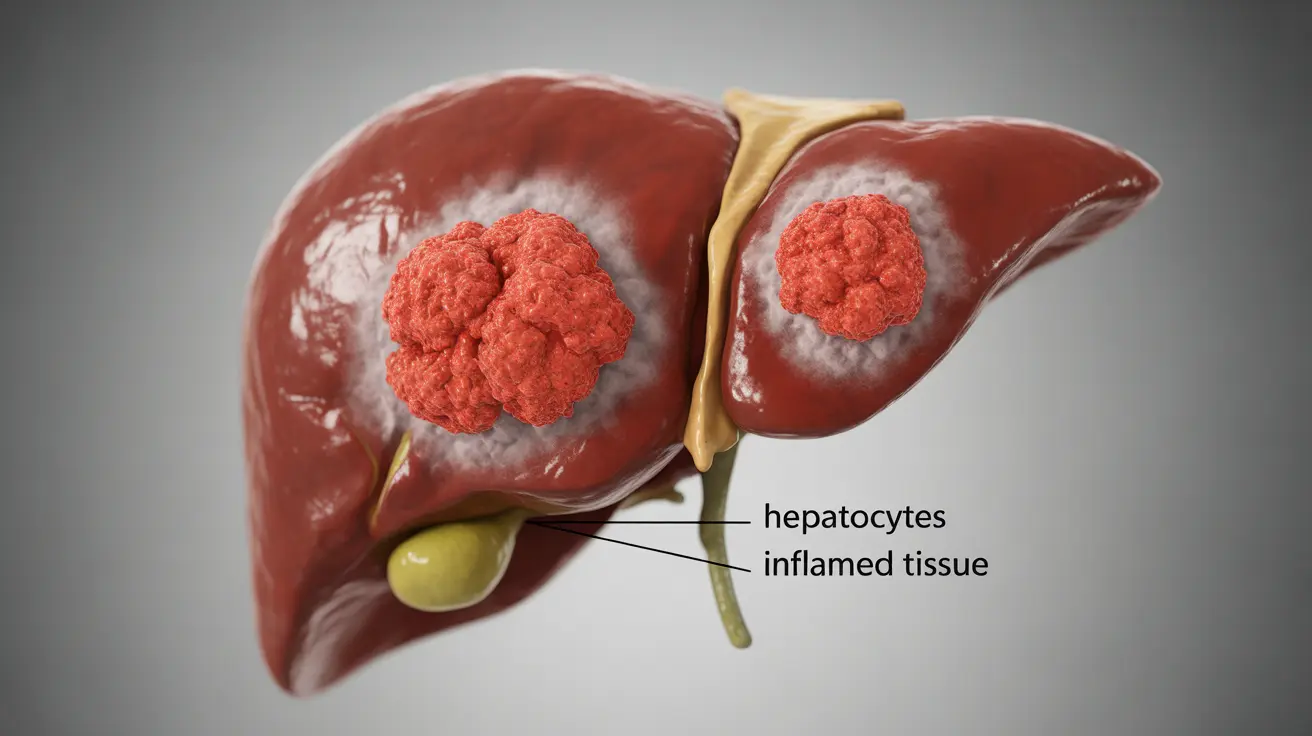Hepatitis caused by mononucleosis (mono) is a specific type of liver inflammation that occurs when the Epstein-Barr virus (EBV) affects the liver. While many people associate mono primarily with fatigue and sore throat, the virus can also impact liver function, leading to a condition known as mono hepatitis. Understanding this condition is crucial for proper diagnosis and management.
This comprehensive guide explores the relationship between mono and hepatitis, including symptoms, diagnosis, treatment options, and prevention strategies. Whether you're experiencing symptoms or seeking information for a loved one, we'll help you understand this common complication of EBV infection.
Understanding Mono Hepatitis
Mono hepatitis occurs when the Epstein-Barr virus triggers inflammation in the liver cells. This condition typically develops as a complication of infectious mononucleosis, affecting approximately 80-90% of mono patients to some degree, though many cases are mild and may go unnoticed.
The liver inflammation usually develops during the acute phase of mono infection, when the virus is most active in the body. While most cases resolve on their own, understanding the condition helps ensure proper monitoring and care.
Signs and Symptoms
Mono hepatitis often presents with symptoms that combine typical mono features with signs of liver involvement. Common indicators include:
- Fatigue and weakness
- Right upper abdominal pain or tenderness
- Yellowing of the skin and eyes (jaundice)
- Dark urine
- Loss of appetite
- Nausea or vomiting
- Enlarged liver (hepatomegaly)
These symptoms may appear gradually and can vary in severity from person to person. Some individuals might experience minimal symptoms, while others may develop more pronounced signs of liver involvement.
Diagnosis and Testing
Healthcare providers typically diagnose mono hepatitis through a combination of physical examination, medical history review, and laboratory tests. Key diagnostic tools include:
- Blood tests for EBV antibodies
- Liver function tests (LFTs)
- Complete blood count (CBC)
- Physical examination for liver enlargement
- Ultrasound imaging (in some cases)
Treatment Approaches
Treatment for mono hepatitis focuses primarily on supportive care and symptom management. The key components of treatment include:
- Adequate rest and hydration
- Avoiding alcohol and medications that can stress the liver
- Regular monitoring of liver function
- Pain management with approved medications
- Dietary modifications to support liver health
Most cases of mono hepatitis resolve spontaneously within weeks to months, but regular medical monitoring is important to ensure proper recovery.
Prevention and Risk Factors
While preventing EBV infection can be challenging due to its widespread nature, certain measures can help reduce the risk of transmission:
- Avoiding sharing personal items like drinking glasses or utensils
- Practicing good hand hygiene
- Maintaining a healthy immune system through proper nutrition and rest
- Avoiding close contact with infected individuals during their acute illness phase
Frequently Asked Questions
What are the common symptoms of hepatitis caused by mononucleosis (EBV infection)?
Common symptoms include fatigue, right upper abdominal pain, jaundice, dark urine, decreased appetite, and occasionally nausea or vomiting. These symptoms typically appear alongside classical mono symptoms like sore throat and swollen lymph nodes.
How is mono-related hepatitis diagnosed and differentiated from other types of viral hepatitis?
Diagnosis involves testing for EBV antibodies, liver function tests, and complete blood count. The presence of typical mono symptoms, combined with elevated liver enzymes and positive EBV testing, helps differentiate it from other forms of viral hepatitis.
What treatment options are available for hepatitis caused by the Epstein-Barr virus?
Treatment is primarily supportive, focusing on rest, hydration, and avoiding liver-stressing substances like alcohol. Regular monitoring of liver function and symptom management are key components of the treatment plan.
Can mono hepatitis cause serious liver damage or complications like jaundice?
While mono hepatitis can cause jaundice and temporary liver inflammation, serious liver damage is rare in healthy individuals. Most cases resolve completely without long-term complications, though recovery may take several weeks to months.
How can mono hepatitis be prevented, and who is most at risk for developing it?
Prevention focuses on avoiding exposure to the EBV virus through good hygiene practices and avoiding close contact with infected individuals. Young adults, particularly college students and adolescents, are at higher risk due to close living quarters and potential sharing of personal items.




